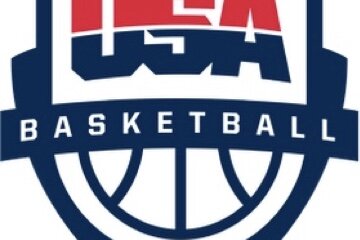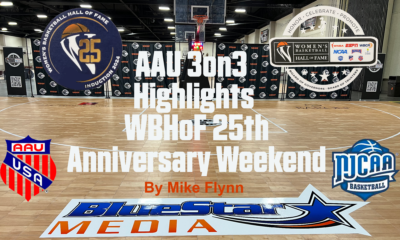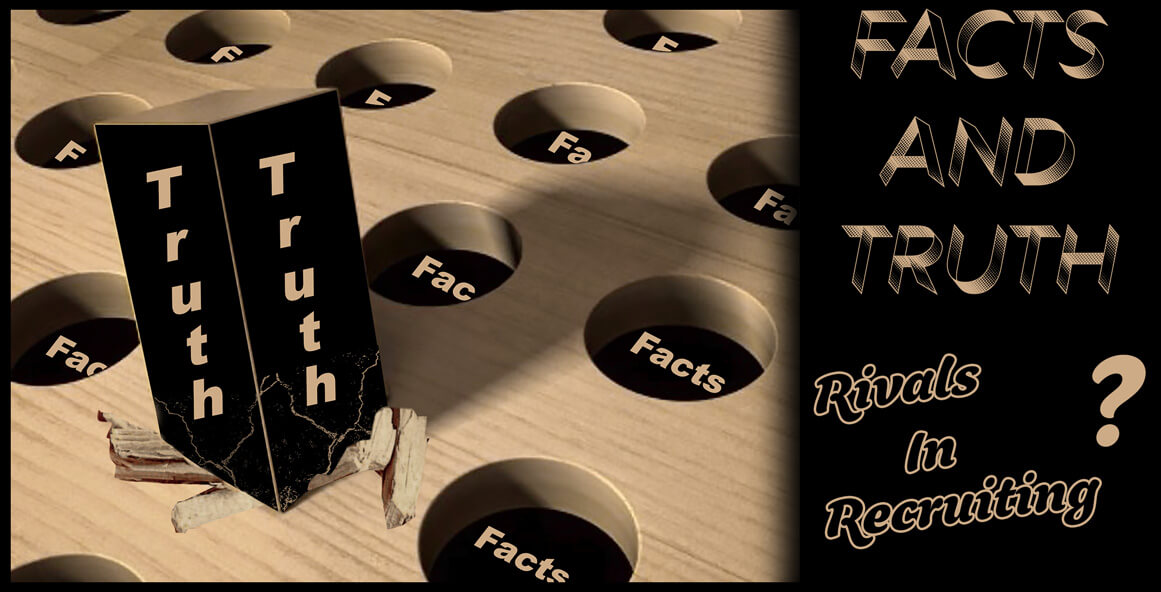The number of potential topics, questions and concerns that an athlete might consider in the recruiting process is immeasurable. For some, every detail is an essential consideration. From the national ranking of their academic major, student enrolment, style of play and length of the coach’s contract to the always important number of Starbucks within a one mile radius of campus, no stone is left unturned. Others still seem to take a minimalist approach and let the chips fall as they may beyond their basic concerns. It’s close to home, all my family has gone there or the simple observation that I can start or get plenty of playing time as a freshman are criteria enough for some.
Regardless of the length of your list or what any of those concerns might happen to be, there are times in the recruiting process where major events within the university or the athletic program require you to take a closer look at your options. These events or issues may have no direct bearing on the women’s basketball program but you’ll still need clarification or definition from the coaching staff as to the indirect or peripheral impact that may result.
The recent events surrounding and involving the Penn State football program, the 2007 Virginia Tech or 2008 Northern Illinois campus shootings are examples of crime oriented occurrences that drew national attention to those universities in a tragic manner. Realistically it would be difficult to make any valid connection between those events and a legitimate reason that a recruit shouldn’t consider their women’s basketball programs. Even last year’s off campus slaying of Middle Tennessee’s junior guard Tina Stewart would be a massive stretch for a prospect to say no on that basis alone to Rick Insell’s first class program. At the same time, it’s important to be aware of the circumstances surrounding such events and closely evaluate them to be sure that they’re not a reflection of campus safety and to assess how the university community reacted and responded to the situation. While enormous in their scope, these events are isolated and extreme situations. Campus crime as a whole is not. At the very least let these incidents serve as a reminder to take a close look at the safety and security of each campus and its surrounding landscape.
While we do have some women’s basketball recruiters who are challenged by illiteracy or poor eyesight and struggle to read the NCAA rulebook, we’ve not had any extensive or explosive compliance scandals within our sport. At the same time, we’ve had plenty of programs who have had to endure the black cloud and question marks that arise from another program within their own athletic department. Whether it’s Nevin Shapiro’s generous but illegal support to Miami football players, the tattoos traded for memorabilia at Ohio State or the Reggie Bush saga at USC, none of these situations has done anything to help perceptions of other programs in the department. And those are just football. Go back in men’s basketball to the Fab Five at Michigan, the Dave Bliss era at Baylor or even the series of secondary violations and struggle with the truth that led to Bruce Pearl’s downfall at Tennessee just last year. Think any other coach wearing the same logo on their chest was overly thrilled about those headlines?
NCAA scandals are not as easily distanced from other athletic programs as criminal events might be. The occurrence of such episodes can offer up a reflection of the leadership within an athletic department or evidence of a prima donna program run wild. I can speak first hand of programs who were convinced of their superiority and entitlement that were an absolute nightmare for the other coaches and athletes within the department. When those programs come crashing down there can be a ripple effect in recruiting and public perception, compliance structure and more so, financial support. You take a football program out of Bowl consideration, men’s basketball out of the big dance or just irritate some boosters enough to not open their wallets quite as wide and the budget begins to look more like republicans than democrats when it comes to spending. Again, as a standalone reason to eliminate a school from your recruiting consideration, another sport’s NCAA issues are hardly a sound rational. However they should necessitate a closer look at the internal and long term ramifications of their indiscretions and penalties.
As long as we’re talking about storms on campus, let’s look at them…literally. Recent incidents that come to mind are last year’s tornado that hit Tuscaloosa and the University of Alabama or the catastrophic impact of Hurricane Katrina on New Orleans and Tulane University in 2005. While the city suffered extensive damage and loss of life, the Crimson Tide and the campus saw less destruction from a physical standpoint but still have to endure the emotional trauma of the storm and loss. Down in the Big Easy Katrina saw to it that the Green Wave spent their fall semester in class and on the court in Lubbock, Texas as guests of Texas Tech University.
Weather can easily be a valid consideration in your recruiting process. Some folks are looking to get out of the cold and head to warmer climates. Others are looking to get away from high volume settings of rain or snow and there are some who are simply looking for something different from that in which they currently reside. No matter what you might be looking for the risk of extreme weather exists everywhere. While California may be known for earthquakes we’ve had them coast to coast just in the past year. Florida, the Gulf states and Carolina’s get more than their share of Hurricanes but this past August Irene had the folks up in the Northeast packing up and heading inland. Tornado Alley is usually highlighted by activity in Kansas and Oklahoma but over 1500 have been reported nationwide so far this year. If you want to pick a school where you can wear shorts year round, go for it. But if you’re looking to avoid Mother Nature’s wrath with your college choice you might be wasting your time.
One last dynamic that is certainly rare but very still very specific and challenging if occurring in a program you’re considering is the existence of an interim coach. Several years ago you had Pokey Chatman filling in for the legendary Sue Gunter at LSU during her 2004 illness which ironically was followed by Bob Starkey finishing the season at the helm following Chatman’s release prior to the 2007 NCAA tournament. Last season Utah’s Anthony Levrets carried the interim title throughout the season as Elaine Elliott took a leave of absence to consider the retirement she ultimately chose. Currently Charli Turner Thorne is on leave at Arizona State “for professional development and to spend more time with her husband and three sons” while Associate Head Coach Joseph Anders is temporarily directing the Sun Devil program. And naturally every spring you’ve got coaches serving on an interim basis as the school searches to replace those who have left on their own or been shown the exit by their administration.
Any interim situation requires careful and extensive homework on the part or a recruit. Signing a National Letter of Intent with a program in which you have no guarantee of who the head coach will be is risky behavior with such an important decision. Just because coaches might have the authority to sign you doesn’t guarantee you that they’ll have the opportunity to coach you. Regardless of what you’re hearing from the staff in place it’s imperative that you have a conversation with the administrators on that campus to confirm the direction and future of the program. Take responsibility to get answers and keep in mind that the NCAA provides no relief from transfer regulations because of coaching changes.
No matter how thorough you are in your efforts or how deep you look into every opportunity presented there are direct and indirect circumstances that can force you to reevaluate your perception of a particular program. It may change things drastically for you or have no impact at all, but that closer look will at least give you additional confidence in both your process as well as your ultimate decision.
Mark Lewis is a national evaluator and photographer for Blue Star Basketball as well as the lead columnist for Blue Star Media. Twice ranked as one of the top 25 Division I assistant coaches in the game by the Women's Basketball Coaches Association (WBCA), he logged 25 years of college coaching experience at Memphis State, Cincinnati, Arizona State, Western Kentucky and Washington State. Lewis serves as a member of the prestigious McDonald’s All-American selection committee as well as the Naismith College Player and Coach of the Year committees.

Latest Articles
-


Christopher Lawlor
/ 21 hours agoSELECTION SATURDAY: USA Basketball U18 Women’s Team is named for AmeriCup tipping on June 17 in Colombia
COLORADO SPRINGS, Colo. – A dozen of the most talented women’s basketball players from...
-


Christopher Lawlor
/ 6 days agoBREAKING: Lisa Bluder steps down as Iowa women’s head coach after leading Hawkeyes to back-to-back Final Fours; Jan Jensen inherits position
IOWA CITY, Iowa – In a shock to some, Iowa women’s head coach Lisa...
-


Christopher Lawlor
/ 1 week agoTwenty-Six Athletes Expected to Participate in USA Basketball Women’s U18 National Team Trials that begin on May 15
COLORADO SPRINGS, Colo. — USA Basketball announced 26 athletes expected to participate in the...
-


Basketball
/ 2 weeks agoAAU 3on3 Highlights WBHoF 25th Anniversary Weekend
KNOXVILLE – The 25th anniversary weekend celebration of the Women’s Basketball Hall of Fame...
By Mike Flynn




